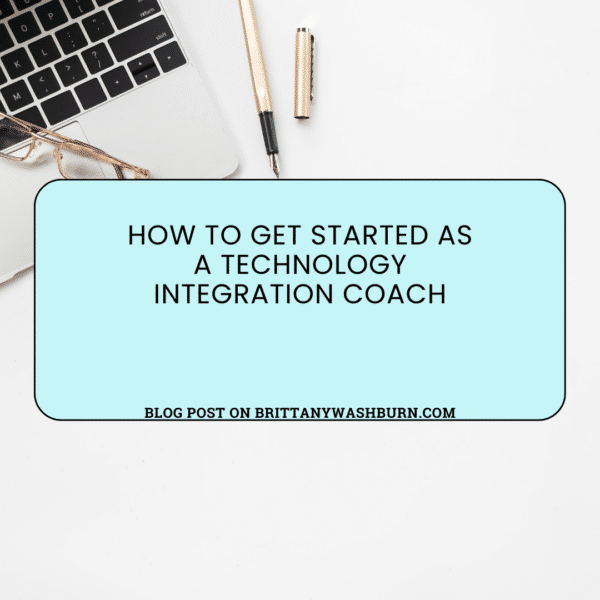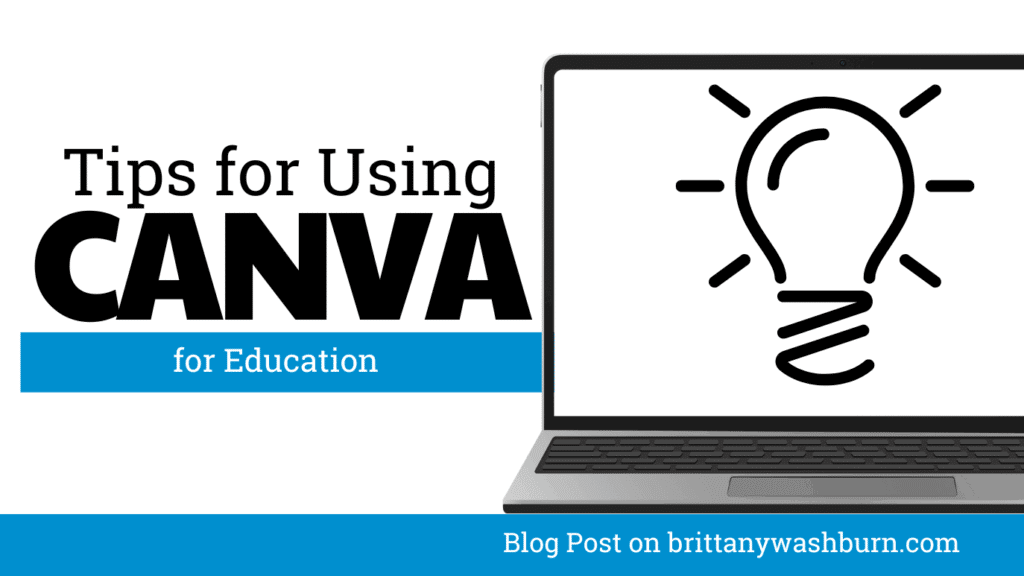How to Get Started as an Elementary School Technology Integration Coach

Elementary school technology integration coaches play a vital role in helping teachers and students to leverage the power of technology to enhance learning outcomes. However, becoming a technology integration coach can be a challenging and complex process. In this article, we will provide an overview of the key steps involved in getting started as an elementary school technology integration coach, including developing the necessary skills and qualifications, building relationships with teachers and students, and creating effective professional development programs. We will also explore the latest trends and best practices in educational technology, and provide insights and tips for staying up-to-date in this rapidly evolving field.
Understanding the Role of an Elementary School Technology Integration Coach
Technology has become an integral part of our lives, and its importance in education is more evident than ever. Elementary schools are no exception, and technology integration coaches play a crucial role in helping teachers and students leverage technology to enhance learning. Here are some key insights into what the role of a technology integration coach entails.
Defining the Role of a Technology Integration Coach in an Elementary School
An elementary school technology integration coach is responsible for supporting and guiding teachers in implementing technology in their classrooms. They are also responsible for creating and implementing a strategic technology plan that aligns with the school’s academic goals, vision, and mission.
Identifying the Key Responsibilities of a Technology Integration Coach
A technology integration coach’s primary responsibility is to support teachers in integrating technology in the classroom. This involves providing training, resources, and support to help teachers effectively use technology tools to enhance student learning. Additionally, they may be responsible for evaluating the effectiveness of technology integration programs and making recommendations for improvements.
Developing Essential Skills and Qualifications for the Job
Being an elementary school technology integration coach requires a unique set of skills and qualifications. Here are some key skills and qualifications necessary for the job.
Acquiring Technical Skills and Expertise in Educational Technology
A technology integration coach must have a thorough understanding of available technology tools and resources and how to use them effectively in the classroom. This requires an in-depth knowledge of educational technology trends, software, and hardware.
Cultivating Soft Skills such as Communication, Collaboration, and Empathy
In addition to technical skills, a technology integration coach must also possess soft skills such as excellent communication, collaboration, and empathy. These skills are necessary to build relationships with teachers, students, and administrators and to effectively communicate how technology can enhance learning.
Building Relationships with Teachers, Students, and Administrators
Relationship building is a critical aspect of a technology integration coach’s role. Here are some ways to establish positive and meaningful relationships with various stakeholders in an elementary school.
Creating and Maintaining Positive Relationships with Teachers
Establishing strong relationships with teachers is key to the success of technology integration in the classroom. A coach should involve teachers in the technology planning process, provide effective training and support, and encourage ongoing communication to keep them engaged in the process.
Establishing Rapport with Students and Encouraging Them to Embrace Technology
A coach must also be able to connect with and inspire students to embrace technology in their learning. This can be achieved through well-designed activities that are engaging and fun, and that challenge students to think critically and creatively.
Collaborating with Administrators to Foster a Culture of Innovation and Change
Collaboration with administrators is essential to building a culture of innovation and change in the school. A coach should work with school leaders to set realistic and achievable objectives for technology integration and make sure that the necessary resources and budget are allocated to achieve them.
Creating and Implementing Effective Professional Development Programs
Professional development is essential to equip teachers with the skills and knowledge necessary to integrate technology effectively. Here are some key factors to consider when creating and implementing effective PD programs.
Designing Professional Development Programs to Meet the Needs of Teachers
A coach should design professional development programs that are tailored to the specific needs of teachers. This can be achieved through targeted needs assessments, surveys, and focus groups that provide insight into teachers’ technological competencies and their preferred learning styles.
Providing Quality Training and Support to Teachers
Providing high-quality training and support is critical to the success of technology integration. A coach should provide ongoing training and support to ensure that teachers are comfortable using technology and can leverage it to enhance student learning.
Encouraging Teachers to Experiment with New Technologies and Teaching Methods
Encouraging teachers to experiment with new technologies and teaching methods is essential to the continuous improvement of technology integration programs. A coach should foster a culture of experimentation and innovation, where teachers can take risks and learn from their successes and failures.
Choosing the Right Technologies and Tools for Your School
When it comes to technology integration in elementary schools, there are countless tools and technologies to choose from. As a technology integration coach, it’s your responsibility to evaluate which tools and technologies are the best fit for your school’s needs and goals.
Evaluating and Testing New Technologies and Tools
Before implementing any new technology or tool, it’s essential to evaluate and test it thoroughly. You can start by researching the tool’s features, pricing, and reviews from other educators. Once you have narrowed down your options, test the tools in a pilot program to determine if it’s a good fit for your school.
Assessing the Needs and Preferences of Teachers and Students
The best way to determine which tools and technologies to implement is to assess the needs and preferences of your school’s teachers and students. Conduct surveys, focus groups, and one-on-one interviews to understand the pain points and preferences of your audience. This will help you identify the most pressing technology needs and ensure that any new tools are well-received.
Collaborating with Vendors and Suppliers to Secure the Best Deals and Discounts
Once you’ve identified the best tools for your school, leverage your relationships with vendors and suppliers to negotiate the best deals and discounts. Often, vendors will offer discounts or special pricing for educators. Don’t be afraid to ask.
Evaluating the Impact of Your Work on Student Learning and Achievement
As a technology integration coach, your primary goal is to improve student learning and achievement through the use of technology. To measure the impact of your work, you need to create metrics and standards, track student progress and learning outcomes, and analyze data to identify areas for improvement and adjustment.
Creating Metrics and Standards to Measure the Effectiveness of Your Work
To measure the effectiveness of your work, you must create metrics and standards. These metrics can include student engagement levels, test scores, or graduation rates. Establishing these metrics will help you track your progress and adjust your strategies based on the data.
Tracking Student Progress and Learning Outcomes
To ensure that your integration efforts are successful, you must track student progress and learning outcomes. Consider creating assessments or surveys to gauge student comprehension or engagement levels. Track this data regularly to identify areas that require improvement.
Analyzing Data to Identify Areas for Improvement and Adjustment
Finally, analyze the data you collect regularly. Use this data to identify areas for improvement and adjustment in your technology integration efforts. Consider working with other educators and coaches to brainstorm solutions to the challenges you face.
Collaborating with Other Coaches and Educators to Drive Change
As a technology integration coach, success is best achieved when working with others. Building professional networks and communities of practice, sharing best practices and lessons learned, and collaborating on projects and initiatives are essential components of driving change at the school and district levels.
Building Professional Networks and Communities of Practice
Building professional networks and communities of practice with other technology coaches and educators is essential to your success. Joining online groups, attending conferences or meet-ups, and collaborating with colleagues regularly can help you learn from others’ experiences and stay up-to-date on the latest trends in educational technology.
Sharing Best Practices and Lessons Learned with Other Coaches and Educators
Sharing best practices and lessons learned with other coaches and educators is a critical component of driving change. Consider hosting workshops or webinars to share your successes and challenges, and work with your colleagues to develop solutions to common problems.
Collaborating on Projects and Initiatives to Drive Change at the School and District Levels
Finally, collaborate with other coaches and educators on projects and initiatives to drive change at the school and district levels. This can include developing a technology integration plan, implementing new technologies or tools, or providing professional development opportunities for teachers. The more you collaborate with others, the more you can drive change and improve student learning and achievement.
Staying Up-to-Date with the Latest Trends and Best Practices in Educational Technology
As a technology integration coach, you must stay up-to-date with the latest trends and best practices in educational technology. This includes participating in professional development opportunities and conferences, reading industry publications and blogs, and networking with industry experts and thought leaders.
Participating in Professional Development Opportunities and Conferences
Attending conferences, workshops, and other professional development opportunities can help you stay up-to-date on the latest trends and best practices in educational technology. Look for opportunities to learn from industry experts and connect with other educators and coaches.
Reading Industry Publications and Blogs
Reading industry publications and blogs is a great way to stay informed on the latest trends and best practices in educational technology. Subscribe to industry publications and blogs and set aside time to read them regularly.
Networking with Industry Experts and Thought Leaders
Finally, networking with industry experts and thought leaders can provide valuable insights and perspectives on the latest technologies and best practices for integrating them into schools. Consider attending networking events, connecting with industry experts on social media, and participating in online communities to build your network.
Becoming an elementary school technology integration coach can be a rewarding and fulfilling career path for those passionate about education and technology. By following the steps outlined in this article, you can develop the skills and qualifications needed to succeed in this exciting field. Remember to focus on building strong relationships with teachers and students, creating effective professional development programs, and staying up-to-date with the latest trends and best practices in educational technology. By doing so, you can make a meaningful impact on teaching and learning, and help to prepare students for success in the digital age.

FAQ:
What qualifications do I need to become an elementary school technology integration coach?
To become a technology integration coach, you will typically need a bachelor’s degree in education or a related field, as well as experience working with technology in an educational setting. Additional qualifications may include certifications in educational technology and proficiency in programming languages and software applications.
What are the key responsibilities of a technology integration coach?
The key responsibilities of a technology integration coach can vary depending on the school and district, but may include designing and implementing professional development programs, working with teachers to integrate technology into the curriculum, evaluating the effectiveness of technology-related initiatives, and staying up-to-date with the latest trends and best practices in educational technology.
How can I build effective relationships with teachers and students as a technology integration coach?
To build effective relationships with teachers and students, it is important to be approachable, empathetic, and patient. You should also strive to create a positive and supportive learning environment, and offer ongoing training and support to help teachers and students succeed. Additionally, you should be proactive in seeking feedback and input from teachers and students, and use this feedback to improve your work.
How can I stay up-to-date with the latest trends and best practices in educational technology?
To stay up-to-date with the latest trends and best practices in educational technology, it is important to attend conferences, participate in online forums and communities, and read books and articles on the subject. Additionally, you should network with other technology integration coaches and educators, and collaborate on projects and initiatives to drive change in your school and district.

Check out these other posts in the Tech Integration category:
Using Screen Recording to Create Quick Tutorials or Instructions for Students
Screen recording has emerged as a powerful tool, offering educators a dynamic way to create…
Top 8 Apps and Programs for Streamlining Classroom Management and Assessment
The integration of technology has become the underpinning which supports teachers as they manage their…
Step-by-Step Guide to Customizing Editable PowerPoint and Google Slides Files for Teachers
Creating engaging presentations is an important skill for educators. Whether you’re teaching a lesson, presenting…
How to Access and Use Free Teaching Resources on Google Workspace
Google Workspace offers a wide array of free teaching resources to enhance the learning experience…
10 Ways to Use Tablets in the Elementary Classroom
Tablets are versatile tools that hold great potential for supporting learning in the elementary classroom…
Creating Visuals and Simple Graphics with Canva for Education
Visual communication plays a crucial role in education, both engaging students and enhancing learning experiences….












